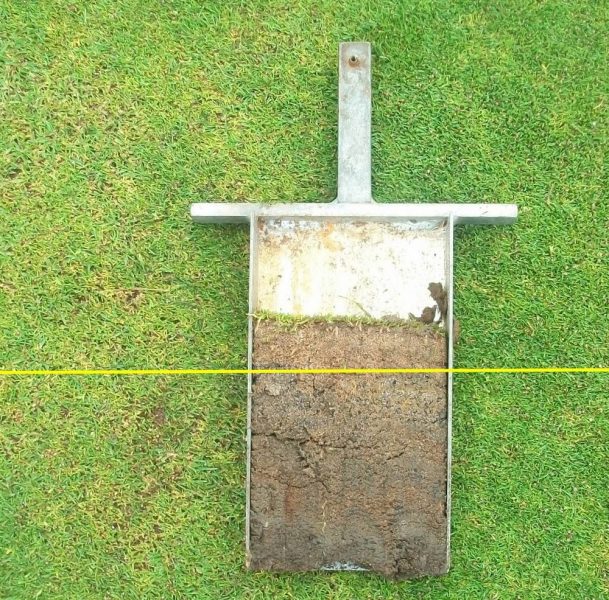Thatch dilution is one of the big claims often made for the efficacy of sand top-dressing, but what does that mean?
The thinking here is that due to the continuing production of thatch by the grass plants, in order to ensure that our rootzone (top-soil) continues to build up as a uniform, homogenous medium, we need to add a layer of sand for the organic material to mix with from time to time.
This idea, although well intentioned in every case, is dangerously inaccurate in terms of soil science and invariably leads to poor bowls green performance caused by thick, matted thatch.
There are two mistakes in this thought process:
- Mistake number 1: That thatch is the same as soil Organic Matter
- Mistake number 2: That soil Organic Matter is the same as the non-sand component of topsoils/rootzones.
You will recall from earlier articles that soil Organic Matter comes in three main forms:
- Living organisms such as plants, worms, microbes and bowlers 🙂
- Recently deposited/fresh Organic Material, such as dead grass roots, stolons, shoots, animal droppings etc, that has still to be processed by the soil organisms and microbes. Thatch is in this category.
- Stable Organic Matter that has been fully recycled/decomposed and is now Humus.
Thatch and Mat
Mixing sand with humus to create a nicely balanced, homogenous topsoil (not necessarily a good idea as a rootzone for sportsturf) is actually a reasonable idea, but mixing sand with un-decomposed thatch is never a good idea and will result in a thick, dense, impenetrable mat on top of the green. When thatch becomes matted like this, it can’t be broken down by the soil organisms and simply gets thicker, denser and more troublesome as time goes on.
Mineral and Organic
In an earlier article I described the make up of rootzones for bowls greens and you might recall that there are various fractions within the soil which are defined mainly by their particle size.
It is essential to have around 10% fines by weight (mostly clay and silt) within the mineral component of the rootzone to help provide water and nutrient holding capacity.
More on the mineral component of rootzones and Particle Size Distribution here
The thatch dilution delusion.
The thatch dilution theory confuses these fines with Organic Matter and assumes that sand plus thatch equals a good rootzone; it doesn’t. Organic Matter is a critical component of a lively, healthy rootzone, but it can’t replace the fines such as silt and clay. In any case, un-decomposed thatch is not Organic Matter, but organic Material awaiting processing by the soil life and microlife.
More on Organic Matter here
Questions, contributions and examples welcome in the comments below:

